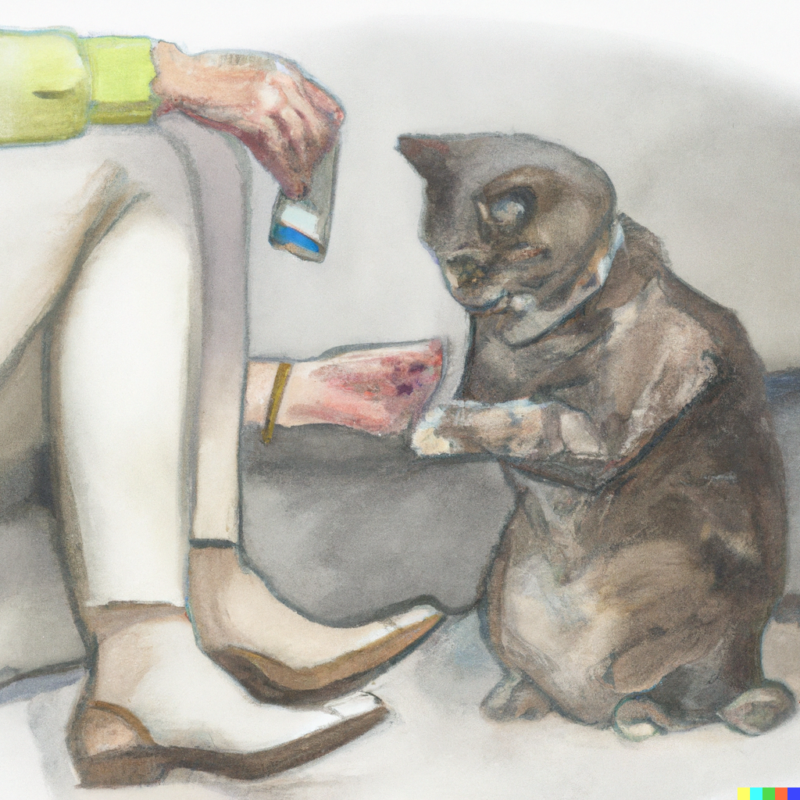Protect Cats From Tick-Borne Illness
Introduction
Jenny had always been a diligent cat owner, ensuring her furry companion, Luna, received the best possible care. However, when Luna suddenly fell ill, Jenny was taken aback. After a visit to the vet, Jenny was devastated to discover that Luna had contracted a tick-borne illness. Filled with a sense of responsibility and determination, Jenny embarked on a mission to learn everything about protecting cats from tick-borne diseases.
Cats are great pets, but they’re not perfect. They shed everywhere, including indoors, where they can spread diseases.
Ticks are tiny parasites that live off blood and cause severe illnesses in humans and animals. They carry tick-borne illness causing bacteria called Rickettsia spp., which causes Rocky Mountain spotted fever (RMSF), ehrlichiosis, anaplasmosis, babesiosis, and Lyme disease. These diseases can be fatal if left untreated. However, there are several ways you can do to help your furry friend from getting fleas and ticks.
1. Check Frequently for Signs of Ticks on Your Cats
Tick season is upon us, and keeping your cat safe during those months is essential. Here are some tips to help you do just that.
- Check Your Cat’s Body
One of the best ways to protect your cat from tick-borne illness is to check them frequently for signs of ticks. Ticks can easily attach themselves to cats and go unnoticed until it’s too late. In addition, symptoms such as loss of energy, vomiting, or difficulty breathing can easily be confused with other ailments that may be minor.
It’s important to do frequent, full-body checks on your cat for any signs of ticks. A tick should be removed immediately if seen, and a veterinarian should be consulted for further examination or necessary treatments. Also, be sure to keep an eye out for symptoms such as coughing, lethargy, discolored coat, fever, or extreme itchiness, which all could indicate something more severe than just the presence of a tick.
- Get Vaccinated
Getting your cats vaccinated against tick-borne illnesses is one of the best ways to protect them. Vaccines contain antigens formulated to activate a cat’s immune system and will help protect them against a range of diseases, including those caused by ticks.
Your vet can recommend the right vaccine for your cat. The most common vaccines are against feline distemper virus (FVRCP) and feline leukemia virus (FeLV), which also protects against certain types of infections carried by ticks. In addition, some vets recommend having cats get bi-annual booster shots, while others suggest revisiting this schedule with their vet after the first year, depending on risk levels in your area.
2. Use Oral Medications

Oral medications are usually prescribed when there isn’t enough evidence to support injectable drugs. They’re typically used to treat chronic conditions, such as arthritis, diabetes, heart disease, hypertension, and asthma.
They’re also commonly used to prevent diseases such as Lyme disease, Rocky Mountain spotted fever, cat scratch fever, and tularemia.
Many oral medications are available, including antibiotics, antihistamines, antacids, pain relievers, and steroids. Some medicines may be taken once daily, others twice daily, and some three times daily.
Some medications must be taken at specific times during the day, such as morning, noon, and night. Others should be taken only after meals.
When taking any medication, it’s essential to take them exactly as directed. Otherwise, you risk side effects, drug interactions, and possible health problems.
3. Tick Sprays Prevent Ticks on Cats
Tick sprays work great when applied directly to ticks. But most people need to use them correctly, and they spray too far away from the cat and too close to the cat.
Tick sprays are quick-acting tick control products that work well against adult and nymphal ticks. These sprays contain permethrin, one of the most effective insecticides known. Permethrin disrupts the nervous system of insects, causing paralysis and eventually death. This product provides residual protection, which continues even after spraying, and does not harm pets or wildlife.
If you use a spray, apply it for at least 30 minutes before removing any ticks. This gives the rush enough time to take effect. After spraying, please wait 10 minutes before you handle your cat. Then carefully remove all ticks. Do not pull off ticks with tweezers; this could cause injury to your cat. Use fine-tipped forceps instead.
4. Shampoos
Shampooing your cat is essential because it removes dirt and debris from his fur. But did you know that shampooing him regularly helps prevent ticks from attaching themselves to his skin?
Use a natural shampoo made specifically for cats to keep your cat healthy. Look for shampoos that contain ingredients like aloe vera, chamomile, lavender, rosemary, tea tree oil, and ylang-ylang. These ingredients help cleanse your cat’s coat and kill bacteria.
If you prefer not to use shampoo, try bathing your cat with water only. Cleaning him this way may be more effective than washing him with soap since soap can irritate sensitive skin.
Also, consider adding essential oils to your cat’s bathwater. Essential oils are safe for cats and dogs; some studies show they can reduce stress and anxiety.
Essential oils include citrus, eucalyptus, peppermint, pine, rosemary, sage, thyme, and vetivert. To add them to your cat’s bath, mix 1/2 cup of warm water with two drops of each essential oil. Could you add the mixture to your cat’s tub and let him soak for at least 15 minutes?
Afterward, rinse off the excess oil with cool water. Be careful not to overdo it, though. Too many baths can dry out your cat’s skin.
5. Consider Spot-on Treatments
Spot-on treatments are one of the most common methods to prevent ticks from attaching themselves to pets. They come in many forms, including sprays, powders, liquids, collars, and tattoos. While spot-on treatments are effective against some ticks, they don’t kill adult ticks, so it’s essential to follow up with regular grooming and tick checks.
Before treating your pet, could you make sure you’ve checked them for ticks regularly? You’ll want to look everywhere, including armpits, groin areas, belly button, behind ears, inside the mouth, under the tail, and around toes. If you find a tick, gently pull it out with tweezers. Don’t squeeze too hard; just enough to pop off the head. Then wash the area with soap and water.

6. Use Tick Dips
Tick dips are used to prevent ticks from attaching themselves to pets. They’re available at pet stores and online. You should consider getting tick dips if you’ve got a cat. But be careful not to use too many because they may cause diarrhea.
There are several types of tick dips, each designed for specific purposes. Some are intended to kill ticks after they attach, others are meant to repel ticks from returning, and others are designed to treat existing ticks.
Flea dips are designed to be applied directly onto the animal’s coat and left there for about 30 minutes. They work best against adult fleas, though some brands claim to kill eggs, too.
The active ingredient in most flea dips is permethrin, a synthetic pyrethroid insecticide. Permethrin kills fleas by disrupting their nervous system, and it doesn’t harm pets or people but irritates the animals’ coats.
Some brands of tick dip contain chemicals that can harm animals, so be sure to read labels carefully.
Also, never apply tick dips directly onto your cat’s skin. Instead, rub the area where the tick was found between two fingers and gently massage the solution into the fur, and this method works better than applying the dip directly to the cat.
When buying tick dips, look for ones made specifically for cats. Avoid those that say they work on dogs or horses. In addition, cats are susceptible to chemical smells, so avoid any product that contains fragrances or scents.
Also, when you purchase tick dips, ensure you get enough for your entire family. Don’t just buy one bottle for yourself and forget about the rest of your family.
7. Powders Work
While keeping your pet’s coat clean and debris-free is essential, you don’t want to use harsh chemicals on your furry friend. Instead, try using natural remedies like powders. Powders contain essential oils that help kill ticks. You can make your tick powder by mixing equal parts of cornstarch, baking soda, and water.
Mix well and store in a sealed container. Then, add a few drops of oil to the mixture and apply directly to your pet’s skin when needed.
Ensure the powder is safe before giving it to your pet. Some oils irritate sensitive skin, so test the product on a small skin patch first. If no reaction happens, please be sure to proceed with caution.
To avoid getting bitten, check yourself and your pet for signs of infection. Check for redness around the bite area, swelling, fever, lethargy, and loss of appetite. If you notice any of these symptoms, contact your vet immediately.
8. Be Vigilant About Keeping Your Yard Clean
Ticks and fleas are everywhere. They’re hiding under leaves, inside walls, and in your cat’s ears. But you can take steps to help prevent infestations. First, could you trim your bushes and lawns regularly? This keeps the insects from hiding out there. Second, spray your house and yard with insecticide every six months. Third, could you make sure you’ve got a good tick-repellant handy? And finally, check your dog frequently for ticks. If he gets one, it needs to come off immediately.
9. Keep Cats Indoors During Peak Hours of Activity
Cats are naturally curious creatures and like to explore new things. They also want to play and interact with people. If you live in an area where ticks are common, keeping your cat indoors is essential. This way, he won’t go outside and expose himself to tick bites.
Ticks love cats and will look for them wherever they roam. To prevent tick infestations, ensure your cat wears a collar with identification tags and check his body regularly for signs of ticks. You can use tweezers to gently pull off ticks without harming the animal.
If you notice red bumps or lumps on your cat, take him to the vet immediately. These could indicate a severe illness such as feline leukemia virus, toxoplasmosis, or even rabies.
10. Tick Collars Works
Tick collars are a great way to protect your cat from ticks. They’re inexpensive, effective, and easy to use.
Tick collars irritate the tick when it tries to feed on your cat. They are usually made of plastic or rubber and come in different sizes. You can check the label before buying a collar to ensure it’s safe for your cat.
There are several types of tick collars available. Some are made out of plastic; others are made out of metal. There are some that clip onto your cat’s collar, and there are others that attach directly to your cat’s skin.
Regardless of type, tick collars should be used regularly. Your cat may not initially show any discomfort, but it will develop a rash where the tick is attached over time. This means that the tick was feeding on your cat.
Frequently Asked Questions
Disclaimer: The information provided on this veterinary website is intended for general educational purposes only and should not be considered as a substitute for professional veterinary advice, diagnosis, or treatment. Always consult a licensed veterinarian for any concerns or questions regarding the health and well-being of your pet. This website does not claim to cover every possible situation or provide exhaustive knowledge on the subjects presented. The owners and contributors of this website are not responsible for any harm or loss that may result from the use or misuse of the information provided herein.







